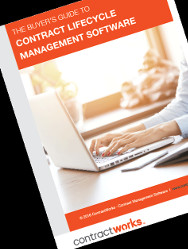A federal judge in the Eastern District of Oklahoma has dismissed a poultry grower’s breach of contract claim against OK Foods Inc. of Fort Smith, Arkansas, after the company severed ties with the grower amid concerns over animal welfare standards.
The company terminated its grower’s agreement with Earl Oldham of Stigler, Oklahoma, just over a year into the three-year agreement following the drowning deaths of an estimated 19,000 broiler chickens during a May 2015 rainstorm. It was the second mass die-off in five years blamed on groundwater flooding at the farm.
In a release, the firm said:
After realizing the water was rising in his three poultry houses, Oldham requested the company remove all chickens from his property. Upon arrival, a company representative discovered that many of the chickens had already died. OK Foods took immediate steps to relocate the surviving chickens to a nearby poultry farm. After OK Foods notified Oldham that his contract would be terminated, the grower filed a breach of contract suit.
The lawsuit dismissal follows a summary judgment motion filed by OK Foods’ attorney Clayton Bailey of Dallas’ Bailey Brauer PLLC. In granting the summary judgment, the court threw out Oldham’s claims seeking nearly $330,000 in lost-profit damages.
“Mr. Oldham in essence moved to terminate the contract with his demands to remove the broilers from the farm, something OK Foods was more than willing to oblige,” says Bailey.
He noted that the swift termination of the contract was in accordance with animal welfare policies implemented by OK Foods CEO and President Trent Goins, Vice President of Live Operations Gary Hogue and Director of Broiler and Hatchery Operations Kelly Garris.
“OK Foods did not agree with the conditions found at this farm, and it was not something that could be tolerated. The operator’s own words, actions and inactions in effect invalidated his grower agreement. OK Foods simply formalized that termination,” says Mr. Bailey. “Animal welfare is something OK Foods takes seriously. OK Foods’ live operations team is ensuring that OK Foods’ chickens are raised ethically and efficiently, and that the company’s customers receive top-quality products.”
In addition to Bailey, OK Foods was represented in Earl Oldham v. OK Foods, Inc. f/k/a OK Foods, Inc., 6:15-cv-00384-RAW by Niki Cung of Kutak Rock LLP, Fayetteville, Arkansas.
 With all the pressure on companies to build a robust cybersecurity defense within their own four walls, one area of risk might be getting overlooked, writes
With all the pressure on companies to build a robust cybersecurity defense within their own four walls, one area of risk might be getting overlooked, writes  Dan Harris
Dan Harris ContractWorks
ContractWorks The advantages and disadvantages of arbitration versus litigation have been long debated, writes
The advantages and disadvantages of arbitration versus litigation have been long debated, writes  Lance Koonce
Lance Koonce In
In